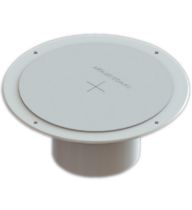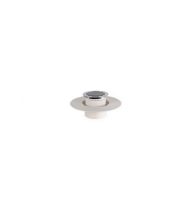When it comes to waterproofing products in Australia, few components are as overlooked—yet as essential—as the Puddle Flange. This unassuming fitting plays a crucial role in keeping water where it belongs, safeguarding both residential and commercial structures from costly moisture damage. Whether you’re a builder, a plumber, or a DIY renovator, understanding the purpose and proper installation of a Puddle Flange can save you time, stress, and money.

What is a Puddle Flange?
A Puddle Flange is a specially designed plumbing accessory used to create a watertight seal around pipes that penetrate waterproofed areas such as bathroom floors, balconies, or basements. It is installed at the point where pipes pass through the waterproofing membrane, effectively preventing water from seeping through the gaps.
It acts as a barrier, ensuring that even if water finds its way under tiles or concrete, it won’t track along the outside of a pipe and compromise the waterproofing system. This small component becomes vital in high-risk areas where long-term exposure to water is expected.
Why It Matters in Australian Construction
With varying climates and a heavy reliance on slab-on-ground housing, waterproofing products in Australia must meet strict standards. Leaks are not just a nuisance; they can lead to structural damage, mould growth, and expensive repairs. Incorporating a Puddle Flange into your waterproofing strategy provides an extra layer of assurance, especially in wet areas regulated by the National Construction Code (NCC).
Key Applications:
-
Shower recesses and wet rooms
-
Balcony and terrace drainage points
-
Basement floor penetrations
-
Commercial wash-down areas
Expert Insights: How a Puddle Flange Works
Installed before tiling or screeding, the Puddle Flange integrates into the waterproofing membrane. Once sealed with compatible adhesives or membrane systems, it acts as a continuous barrier, eliminating the risk of leaks at pipe junctions.
Modern flanges are typically made of PVC or stainless steel, offering durability and compatibility with various waterproofing systems. Always check that your chosen product meets AS 3740—Australia’s standard for waterproofing in residential buildings.
What Tradespeople Say
“I didn’t use puddle flanges early in my career and learned the hard way. One leak led to weeks of repair work. Now I never install a bathroom without them.”
— Nathan G., licensed builder, Sydney
“For compliance and peace of mind, we always recommend puddle flanges, especially in multi-storey developments. They’re a small investment for big protection.”
— Leanne P., waterproofing consultant, Melbourne
Frequently Asked Questions
Q: Is a Puddle Flange required by law in Australia?
A: While not always legally required, many waterproofing professionals and certifiers highly recommend them for compliance with AS 3740 and to pass final inspections.
Q: Can I install a puddle flange myself?
A: If you’re comfortable working with plumbing and membranes, DIY is possible. However, for compliance and performance, professional installation is often advised.
Q: Which waterproofing products in Australia are compatible with puddle flanges?
A: Most liquid membranes and sheet-based systems are compatible. Always check product datasheets and consult with suppliers for specific pairing recommendations.

Conclusion: Small Device, Big Difference
When used in conjunction with reliable waterproofing products in Australia, the Puddle Flange can dramatically improve the longevity and effectiveness of your water protection system. It’s a practical, proven solution for a common weak spot in wet-area construction.
Before starting your next project, take the time to include this crucial fitting in your plans. It’s a simple measure that could prevent thousands of dollars in damage down the line.
